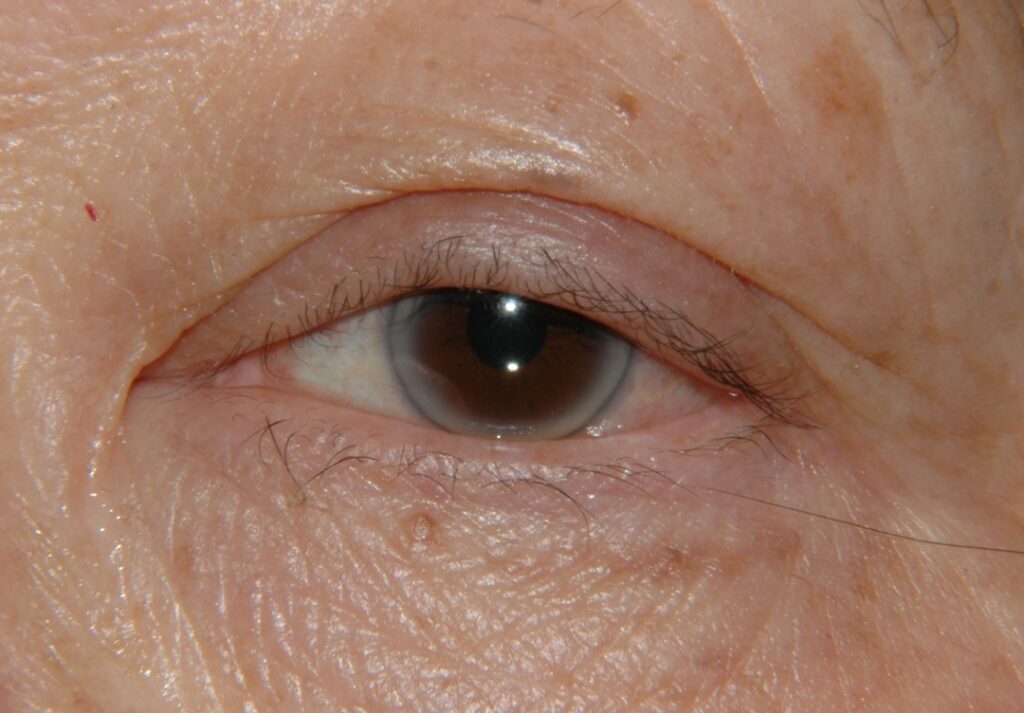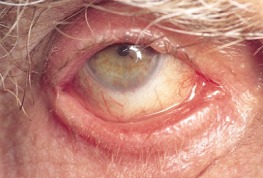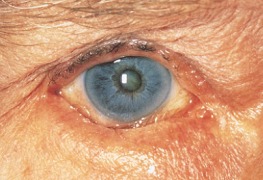It goes without saying that the eyelids are important cosmetically. However, their principal role is to protect and moisten the surface of the eye.
A number of conditions can affect the height and symmetry of the eyelids. The most common cause of many of these changes is aging. However, it is important to rule out other causes of lid problems such as mechanical, neurological, hormonal or immune mediated conditions.
If all other diagnoses have been excluded and we are satisfied that the cause is purely age-related then we can tighten some of the ligaments and tendons around the lids to restore their normal position and function.
If the upper eyelids are high (retracted) or low (ptosis), this can be corrected with skin-crease surgery through the upper eye lid. If the lower eyelids are rolled inwards (entropion) or outwards (ectropion), this can be addressed with ligament tightening surgery on the outer edge of the eye.
A ptosis (droopy upper lid) before repair.

A ptosis (droopy upper lid) after repair.

An ectropion, the lower eyelid is rolled outward.

The opposite of an ectropion is an entropion. This is where the eyelid is rolled inwards, with the eyelashes grating against the surface of the eye. This mechanical abrasion can cause scratches to the cornea (clear window) or an infection / ulcer which is sight threatening.
An entropion, the lower eyelid and eyelashes are rolled inwards.

